Experimental Neutrino Physics
Neutrinos
Unlike other subatomic particles, neutrinos do not experience the electromagnetic and strong forces. Because they only feel the weak force, they are very difficult to detect. Enormous numbers of neutrinos, produced inside the sun (solar neutrinos) and by cosmic rays interacting with the atmosphere (atmospheric neutrinos), pass through the entire earth with only a very tiny fraction of them interacting.Postulated by Pauli in 1930, their very existence took more than two decades to establish. In the 1950s experiments with nuclear reactors discovered electon-like neutrinos and in the 1960s accelerator-based experiments discovered muon-like neutrinos. During this same period, other experiments discovered that the weak force only produces left-handed neutrinos, showing that nature violates parity symmetry. All three discoveries led to Nobel prizes.
More recently, a major breakthrough in neutrino physics came in the discovery of oscillations of atmospheric neutrinos (Super-Kamiokande, 1998) and solar neutrinos (Sudbury Neutrino Observatory, 2001). The discovery that neutrinos can change their identity, indicating that neutrinos are not massless, led to the 2015 Nobel Prize in Physics.
Neutrinos are also interesting for astronomy. When a star collapses to form a neutron star in a supernova, it produces a burst of neutrinos. This was observed in the supernova SN1987A by the Kamiokande detector in 1987, leading to the 2002 Nobel Prize. In 2018, very high energy neutrinos from a Blazar was observed by the IceCube experiment in coincidence an with optical observation, opening neutrino astronomy in the higher energy region as well.
Many of the large neutrino detectors were originally proposed for the search of proton decay, as predicted by grand unification theories of weak, electromagnetic, and strong interactions. This is perhaps the only experimental signal sensitive the energy scale of 10^{16} GeV. These detectors are also sensitive in search for neutrinos coming from hypothetical dark matter particle annihilation in the earth, sun, and galactic centre.
The scientific community studying neutrinos has expanded significantly in the past few decades. VISPA scientists are founding members of the accelerator-based experiment T2K and are preparing for the next generation facility, Hyper-Kamiokande.
T2K
The T2K experiment is a long-baseline neutrino oscillation experiment, sending a muon neutrino beam from J-PARC proton accelerator on the east coast of Japan to Super-Kamiokande located 295km away, close to the west coast of Japan. The experiment measures how neutrinos transform from one flavour to another between these distance places.
T2K is a collaboration of more than 400 scientists from 12 nations. The T2K-Canada group contributed to the accelerator and neutrino beamline design, and built the remote handling system and optical transition radiation (OTR) beam monitor for the neutrino production target. The group also designed and built the two main components of the near detector system; the fine-grained scintillator detectors (FGD) and time projection chambers (TPC). A picture showing these devices is shown below.
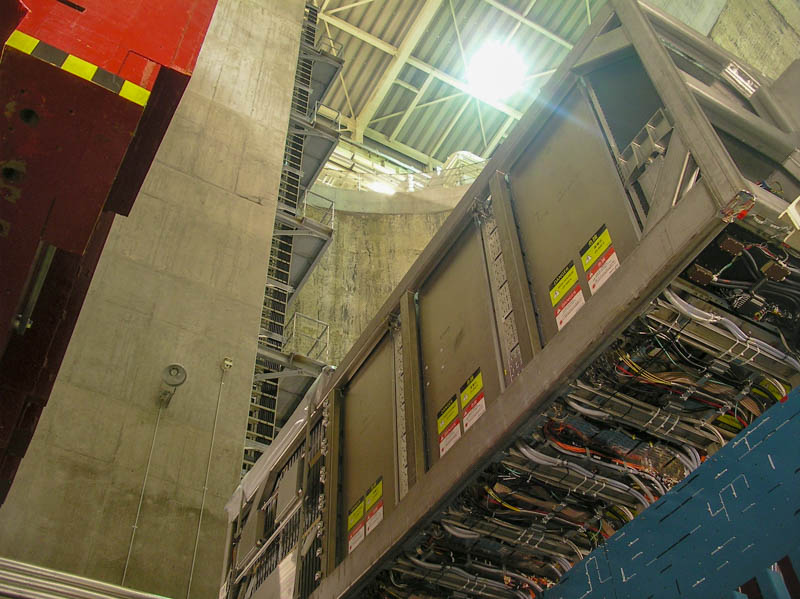
T2K was the first experiment to show that muon neutrinos transform to electron neutrinos, and for that discovery T2K members shared in the 2016 Breakthrough Prize in Fundamental Physics.
The latest T2K results indicate that muon neutrinos may oscillate differently from anti-muon neutrinos, which would mean that neutrinos violate the so-called charge-parity (CP) symmetry. CP violation by neutrinos could have been responsible for the fact that the Universe is now primarily made of matter (with very little anti-matter). To firmly establish CP violation will require much more data and a much better understanding of neutrino interactions. This is one of the primary scientific goals of the Hyper-Kamiokande project.
Hyper-Kamiokande (Hyper-K)
Members of VISPA are currently working with others in Canada and around the world towards the realization of Hyper-Kamiokande, a 250kton water Cherenkov detector in Japan. When completed, in the mid-2020s, it will be the world’s largest detector for neutrinos in the range of a few MeV to tens of GeV, covering the solar, supernova, atmospheric, and accelerator neutrino energy range.
In September 12, 2018, University of Tokyo, the host institution, announced that the construction of the Hyper-Kamiokande project will start in 2020. On December 13, 2019, the Japanese government approved funding for its construction. The goal of the project is wide ranging, from precise neutrino oscillation measurement in accelerator and atmospheric neutrinos, neutrino astronomy of solar and supernova neutrinos, and searches for new physics phenomena such as proton decay and dark matter. An schematic drawing of the detector is shown below.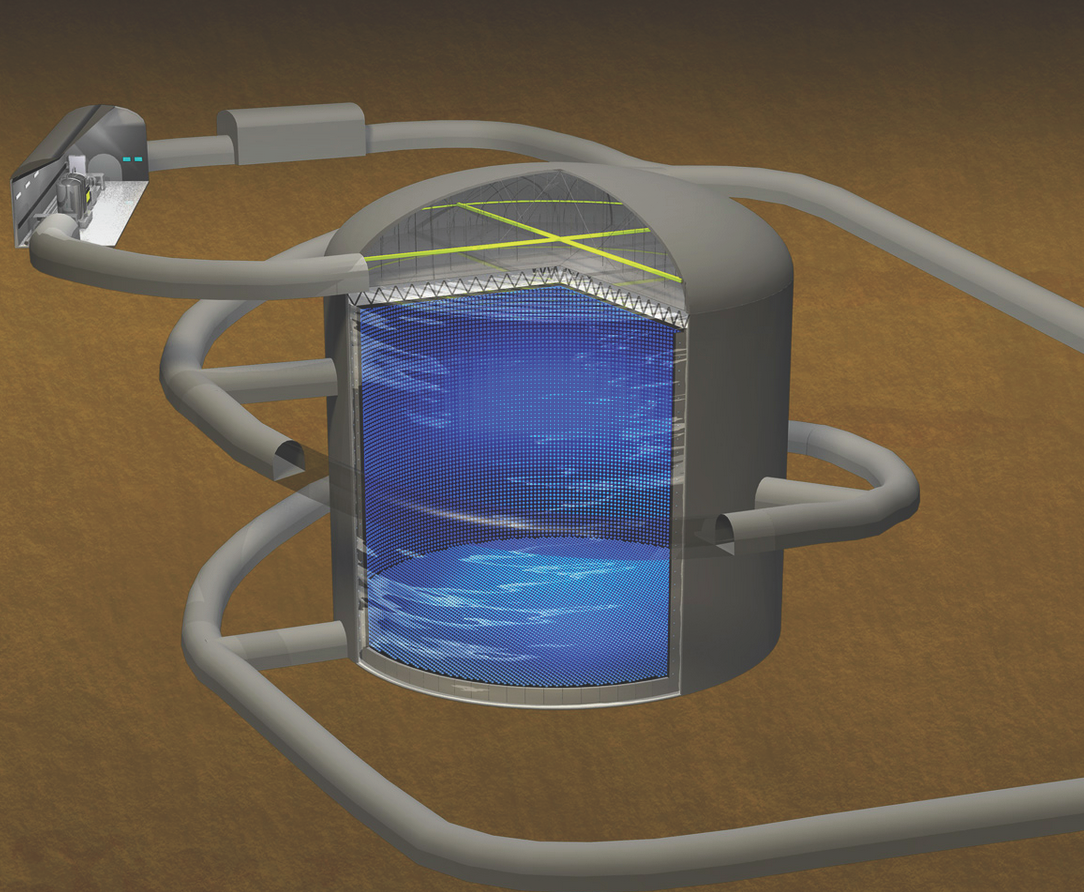
One of the main goals of Hyper-Kamiokande is to discover CP violation in neutrino oscillations. This is done by observing a difference in the muon neutrino to electron neutrino transition probability between neutrinos and anti-neutrinos. Hyper-Kamiokande can be sensitive to even a small amount of CP violation, provided the systematic
uncertainties are significantly less than the statistical error on the event rate of 3%.
VISPA and the Canadian Hyper-K group are engaged in the challenging program to reduce systematic uncertainty in neutrino oscillation measurements. The major sources of systematic uncertainty are related to the initial neutrino flux, neutrino interaction cross section, and the detection efficiency of the water Cherenkov detector. We are taking the initiative to address each of these components:
- Hadron interaction cross section measurement (EMPHATIC) to better understand the neutrino flux
- An intermediate water Cherenkov detector (IWCD) that covers a range of off-axis beam angles to better understand neutrino cross sections and multi-PMT detectors
- Beam tests of prototype water Cherenkov prototype detectors to better understand detection efficiency
Super-Kamiokande (Super-K)
The far detector of T2K is Super-K, a 50kton water Cherenkov detector with an inner volume of 32kton whose surface is covered by 20-inch photomultipliers. Neutrinos interacting in the detector produces fast-moving charged particles. When the velocity of the particles exceeds the velocity of light in the water, they produce shock wave of light, called Cherenkov radiation which create ring image in the detector. By reconstructing the charge and timing pattern observed by the PMT’s, we can reconstruct the energy, direction, and particle types.
The Super-K tank is going through an upgrade to include Gd. Gd dissolved in the water will capture neutrons and emit gamma rays with total energy of about 8MeV with a capture time constant of 30μsec. By detecting these neutrons, one can tag anti-neutrinos which involves neutrons in its reaction for supernova, atmospheric, and accelerator neutrinos, which will expand the scope of the detection. The neutron detection also make significant reduction in the nucleon decay background that comes from atmospheric neutrinos. Photographs of Super-K taken during the Gd upgrade work are shown below:
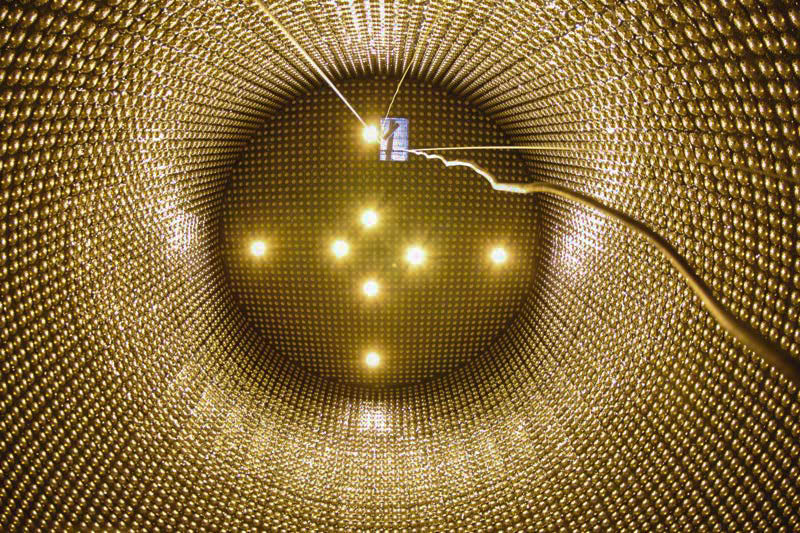 |
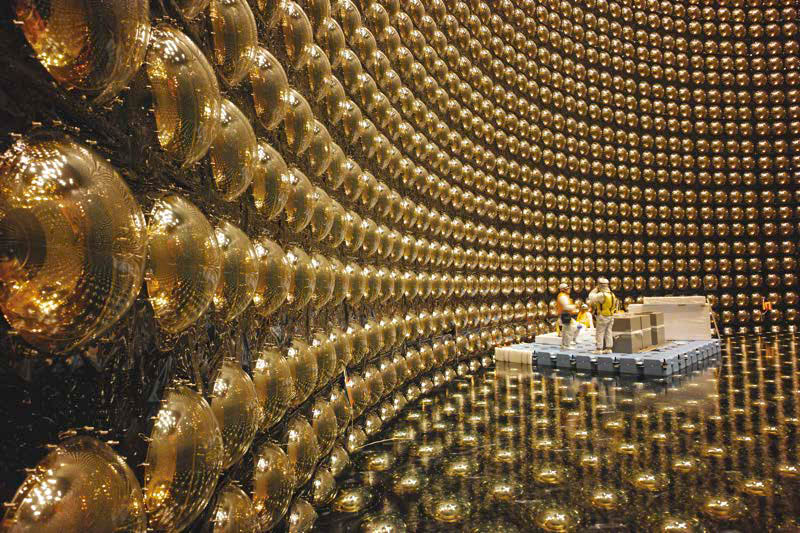 |
VISPA and the Canadian Super-K group are involved in the calibration of the Super-K detector, and plans to apply the knowledge from the water Cherenkov calibration/event reconstruction and EMPHATIC neutrino flux studies to improve the physics analysis.
EMPHATIC
Atmospheric and accelerator muon neutrinos arise from the decays of pions produced by hadron interactions with matter. While the decay process of pions are very well understood, uncertainty in the pion production cross section leads to the dominant systematic uncertainty. These hadron interaction cross sections have been measured over the years, but there is a significant lack of precision data in range of 1-15 GeV/c.To cover this region, the Canadian Hyper-K group proposed a compact new hadron production experiment, EMPHATIC, shown below. It uses a high precision silicon strip detector, a compact Neodymium permanent magnet, and a proximity focused aerogel ring imaging Cherenkov counter, along with a high-speed data acquisition system. The compact detector system not only makes the detector inexpensive but also suppresses systematic uncertainty with little trigger bias and efficiency loss in tracking.
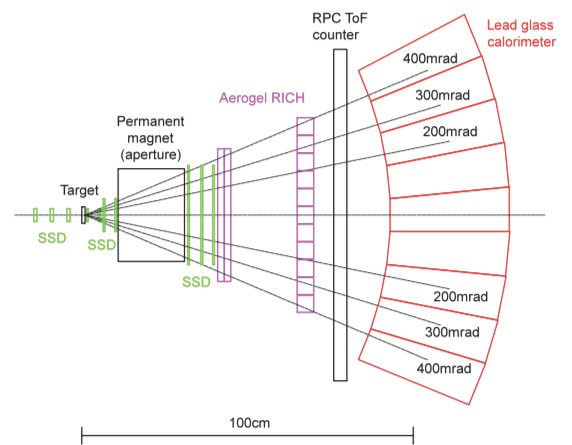
A pilot data run was taken in January 2018 with only the tracking detectors, which demonstrated excellent tracking resolution and efficiency. The preliminary analysis of the momentum transfer shows a clean measurement of the slope due to elastic scattering off the carbon nucleus and quasi-elastic scattering off the nucleon inside, as well as contributions from the Coulomb-Nuclear interference.
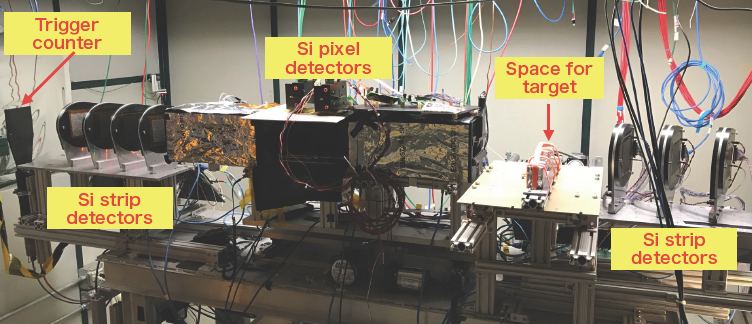
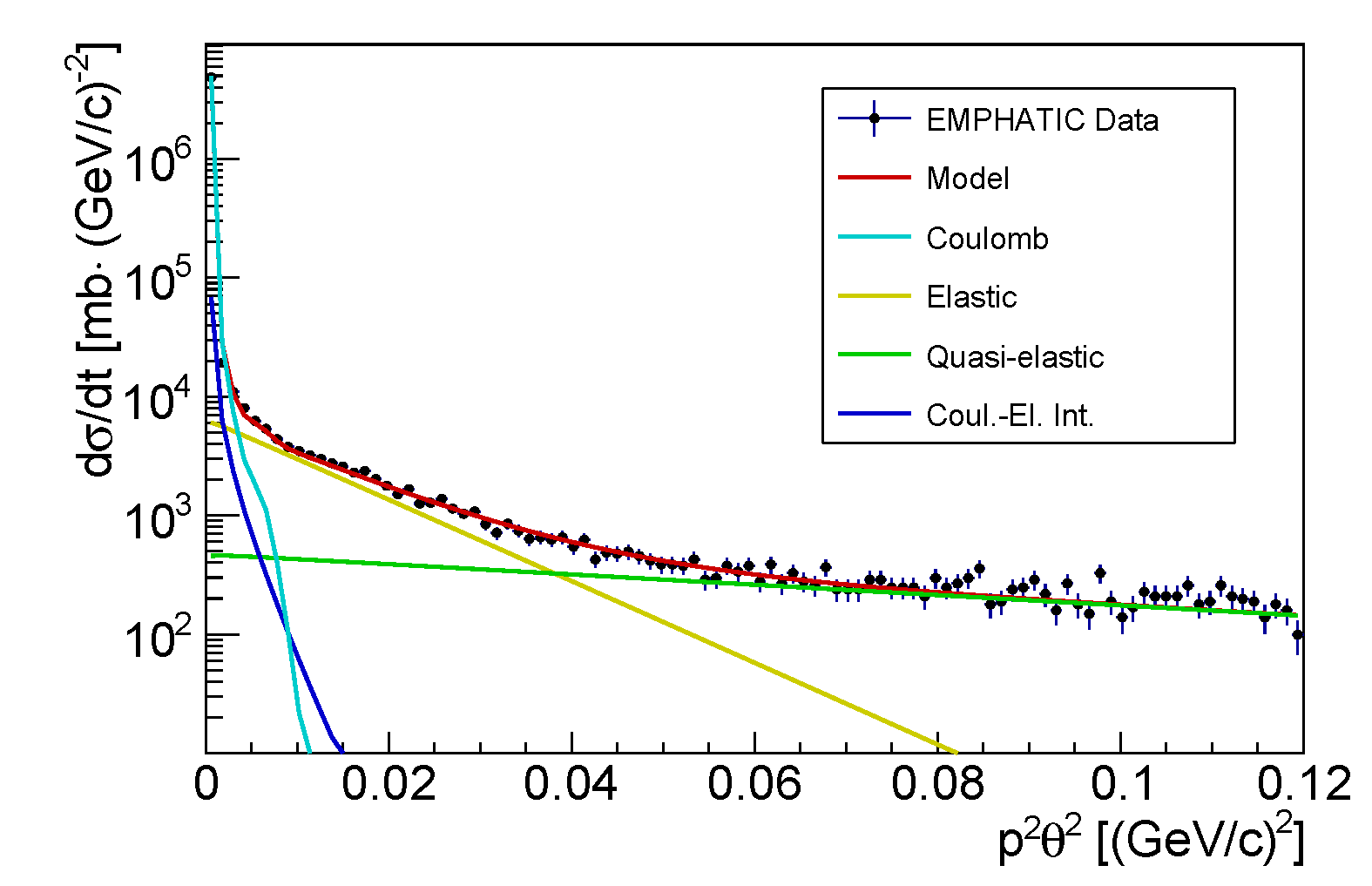
IWCD
The Canadian group proposed the NuPRISM concept to detect neutrino interactions at different positions from the central neutrino beam axis. The neutrino energy spectrumshifts to lower energies for angles further away from the beam axis, and this behaviour is well understood by the two body decay kinematics of pions in the decay volume. By taking a weighted average of the neutrino interactions observed at different positions, one can reconstruct the response (cross section) as a function of neutrino energy with small systematic uncertainties.
The NuPRISM detector received Stage-1 approval by the J-PARC program advisory committee and is now officially named the IWCD project. It is adopted as the intermediate water Cherenkov detector for Hyper-K, and the facility construction budget is requested for the Hyper-K project.

Since the detector size of the IWCD is significantly smaller than Hyper-K, the photosensor granularity needed to be improved accordingly. We have adopted the multi-PMT concept of KM3NeT, placing a multiple 3-inch PMT’s inside a water tight vessel. A prototype development is on-going at TRIUMF, with an improvement in the gel coupling and timing resolution of the PMT’s. A large test experiment, called WCTE, with about 100 mPMTs in a water tank is planned for 2021-22 in a test beam at CERN.

Water Cherenkov calibration and event reconstruction
The technology of calibrating water Cherenkov detectors has improved over the years. Calibration sources such as laser light and radioactive sources (Ni-Cf source) are placed at different positions of the detector to calibrate the timing and efficiency of the photomultiplier as well as the reflectivity of the wall material including the PMT surface. However, when very high precision is required, the best approach so far is to rely on the physics based calibrations, such as the electrons from muon decays and the injection of electron beam from linac in Super-K. This prevents the application of precision measurement for more complex phenomena such as higher energy events with multiple rings, and it is essential to take the step towards achieving the precision bottom-up detector calibration based on the basic detector performance such as the photosensor response, absorption/scattering in the water, and light reflection on the wall.
One of the largest uncertainty in the bottom-up calibration is the angular response of the PMT’s. We have developed a photosensor test facility to study the photosensor response by injecting the laser light at different angle and positions using a robotic gantry arm. The second robotic arm can be used to detect the reflected light from the PMT surface. An initial study of the SuperK PMT shows an interesting ring pattern in charge and timing which is attributed to the photoelectron skipping the first layer of the venetian blind dynode. Detailed characterization of the PMT against the residual magnetic field is also being studied by adjusting the compensation Helmholz current.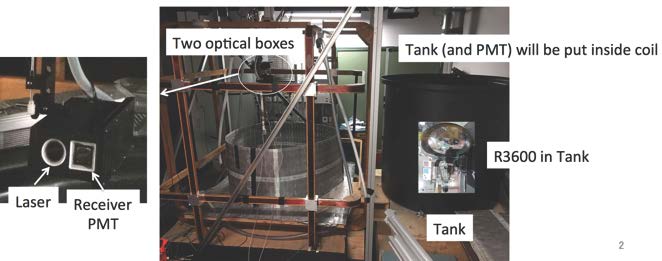
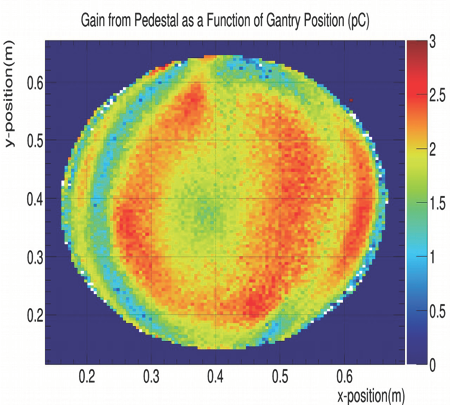 |
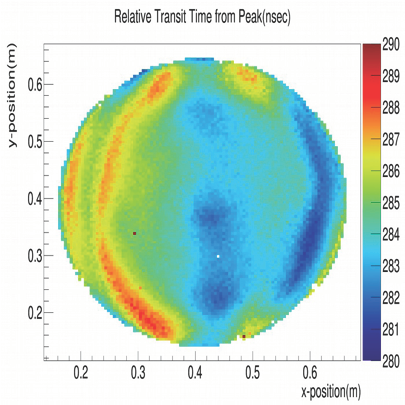 |
In addition to the detector calibration, significant improvements in the event reconstruction are needed. The Canadian group has developed a likelihood analysis based event reconstruction, fiTQun, which drastically reduces the background and lead to the discovery of the direct transformation of the muon neutrinos to electron neutrinos in 2013. Once the bottom-up calibration is realized, errors can be properly evaluated for more complex analyses, such as machine learning event reconstruction, and make a large leap in the water Cherenkov analysis. For example, we could distinguish the electron signals from gamma rays and accidental backgrounds to improve the efficiency and signal-to-noise ratio in the solar and supernova neutrino analyses. We could also fully reconstruct the multi-ring (multi-track) events and even separating gammas backgrounds from electron signals at high energy.
Faculty
Adjunct Faculty
- Mark Hartz
- Akira Konaka
Graduate students
- Nick Booth
- Leesa Brown
- Vincent Gousy-Leblanc
Former Graduate students
- Casey Bojechko
- Kyle Fransham
- Andre Gaudin
- Jordan Myslik
